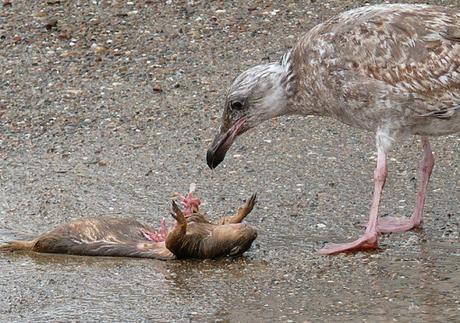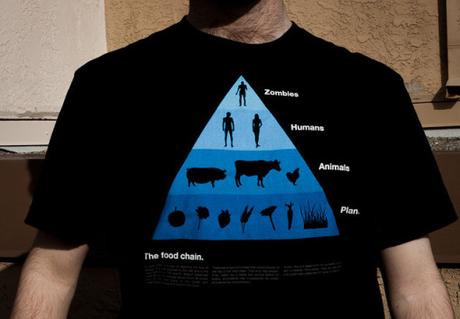What is a Food Chain and a Food Web?
We all depend upon food to survive. Energy is necessary for living beings to grow. But did you know that there is a process of creating this food? There are also a number of different plants and animals that depend upon this creation to survive. There are names for this, and learning more is a great lesson that might just surprise you.
The food chain is a system used to transmit energy from one organism to the next. When those systems are used in ecology, they are known as the food web. A food chain describes the method in which a particular organism collects its food. In other words, a food chain is a sequence of who eats whom in a biological community or an ecosystem to obtain food. A food chain is a way of depicting the flow of energy from one organism to the next and to the next and so on. Everyone needs the energy transmitted through a food chain in order to survive.
A food chain basically shows how living things get food and how energy and nutrients are passed from creature to creature.

According to Wikipedia,
“A food chain is a linear network of links in a food web starting from producer organisms (such as grass or trees which use radiation from the sun to make their food) and ending at apex predator species (like grizzly bears or killer whales), detrivores (like earthworms or woodlice), or decomposer species (such as fungi or bacteria).”
Sunshine the main energy source for all living organisms. It is needed in order to provide plants with the food they need as well as to give humans and others energy that keeps them healthy and free of disease. There are four basic parts of a food chain. Those four parts are:
- Producers: Producers, or plants, are given this name due to the fact that they are the only organism that produces their own food. Plants also produce foods for other organisms.
- Consumers: A consumer is an organism that eats something such as animals or plants. There are both carnivores and herbivores, parasites and scavengers.
- Scavengers: A scavenger is bacteria or fungi. Although we aren’t too keen on scavengers, they are important in the food chain due to the fact that dead matter is converted into nitrogen and carbon which is released into our atmosphere.
- Decomposers: Decomposers come into the picture to finish where the scavenger leaves off.
Let’s take a more in depth look at each of these parts of the food chain and learn how they work.
Producers
Producers give us the energy needed through a process known as photosynthesis. This process combined with minerals and nutrients from the soil, allow a plant to grow and to bloom, and then reproduce. Foods that are produced through this process include:
- Apples
- Pecans
- Peaches
- Carrots
- Potatoes
Plants create a great amount of energy that is needed to provide food. They use sunlight to help them grow. Yes, all of those plants that you see out there are using the sunlight to produce food for themselves and to help themselves grow.
Many animals depend on these plants to survive. This brings us to primary consumers.
Consumers
Primary Consumers
Primary consumers are known as herbivore in the animal world. These consumers are given the name because they are the first to eat the plant. Once the plant is eaten, the energy is transferred and then used by this animal. For e.g.: primary consumer is grasshopper that eats grass.
Secondary Consumers
Secondary consumers are larger animals that eat smaller animals and insects. In this case, the secondary consumer is the large animal that eats an animal that consumed a plant. Energy is transferred to the secondary consumer just as it is to the primary consumer. For e.g.: secondary consumer is rat that eats grasshopper.
Tertiary Consumers
Tertiary consumers are carnivores who consume other carnivores. A human is considered a tertiary consumer, and so are a number of other large animals, including tigers, moose, elephants, lions, bears, and sharks. Most of the time the tertiary consumer has no predator, but this isn’t always the case. When they die, they become a tasty meal for many animals. Generally this is not a concern that a human has, thankfully, but there are many animals that do. Tertiary consumers like snake eat secondary consumers.
Scavengers and Decomposers
The last link in the chain is scavengers and decomposers. When an animal lives out its life and dies naturally, it leaves its carcass behind. Decomposers break down nutrients in the dead “stuff” and return it to the soil. The animal leaves behind a great amount of energy. The animal begins to rot and it becomes a very gross scene. To minimize this from happening, scavengers and decomposers exist.
The scavenger has the following qualities:
- A scavenger is an animal that is attracted to the smell of the dead animal
- Scavengers eat the dead animal
- Most of the time, it is the smell that alerts the scavenger to the presence of the dead animal. Sometimes, however, the scavenger gains its clues from other groups of scavengers who’ve come to enjoy a feast
- Scavengers include foxes, bears, coyotes and turkey vultures.
- Scavengers have a keen sense of smell
- These animals eat the animal, leaving behind its carcass
Nothing goes to waste, however, and with the remaining part of the animal the decomposer comes in to play. As the animal is being eaten by scavengers, insects come in and break the animal down even further than the scavenger. Maggots, ants and beetles are common decomposers. Once they eat the animal, they lay eggs. The larvae that is born then continue to eat the decomposing body. Bacterial and fungal matter finish off the decomposition process until it is entirely one. The energy that the animal had is passed on to the animals and insects that have eaten it.
A few more facts important to know:
- Bacteria and fungi return the matter to the soil. It is then reused for plant growth and energy.
- It all seems like a nasty process, and you certainly don’t want to stand by when it is happening. But think of it like this: what kind of world would we be living in without scavengers and decomposers?
A Look at the Food Web
The food web is practically the same as a food chain, only in a far more simplified process. A network of many food chains is called a food web. The food web ensures that there is a plentiful supply of food so that all plants, animals, and insects have a sufficient amount. If a plant of one specific type were to die off due to disease, grasshoppers and many other insects would suffer. This would then cause suffering with the other links in the food chain. The food web ensures that this is not something that happens.
Humans are omnivores, or animal and plant eaters. Thus, humans are both primary and secondary consumers of food. However, in most cases, a human is the tertiary consumer. When you eat a vegetable, you are the primary consumer. When you eat a meat, you are a secondary consumer. But as the tertiary consumer of the food, the human is generally the primary consumer of the meat and the plant.

Difference Between Food Web and Food Chain
Here are a few facts about the food web and the food chain that are important to understand.
- A food web is a group of different food chains that work together to make the ecosystem.
- Food chains in the food web are interlinked at one point or another.
- The food chain is the pattern that energy uses to transmit to producers to decomposers.
- A food chain only follows just one path as animals find food.
- A food web shows the many different paths plants and animals are connected.
- A food web is several food chains connected together.
- Food chains always begin with a plant and end with an animal.
- All living beings need energy in order to survive. These food web and food chain processes make it possible to have that energy.
- More than 100,000 different decomposers exist in the world
- There are four types of consumers that exist: A carnivore eats nothing but animals; a herbivore eats nothing but plants; an omnivore eats both plants and animals; scavengers eat dead animals and their carcasses.
- All links to the food chain are necessary. Even if one of the steps of the food chain is eliminated, it could cause disastrous results.
- Plants are at the beginning of the food chain and humans at the end.
Final Thoughts
It is very interesting to learn the process of the food web and the food chain. We often simply sit down and eat, rather than think about where our food is coming from or the process that it took in order to reach our tables. When you learn more about the food web and food chain, you can easily care more about your foods.

